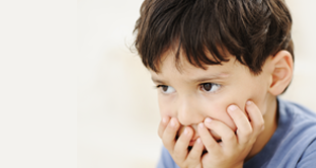
Paediatrics
Childhood Cancer: Myths Busted
Dr. Anand Sinha Oct 23, 2015
Survival after childhood cancer is good with many children achieving cure with the right treatment modality. It is important to detect the cancer early and to procure appropriate treatment from a specialised centre Can children be affected by cancer?
Yes, children too can suffer from cancer. Childhood cancer, however, is different from cancer in adults.
What causes cancer in children?
In adults, most cancers are strongly linked to lifestyle or environmental risk factors but in children cancer is often the result of Deoxyribonucleic Acid (DNA) changes happening very early in life or even before birth.
Cancers can be caused by DNA changes that turn on oncogenes or turn off tumour suppressor genes. Some children inherit DNA changes (mutations) from a parent that increase their risk of certain types of cancer. But most childhood cancers are not caused by inherited DNA changes. They are the result of DNA changes that happen early in the child’s life, sometimes even before birth. These changes start in one cell and then pass the damage on to all the cells that come from it.
What are the most common types of childhood cancers?
Childhood cancers are different from those seen in adults and most of them are only seen in childhood and not later. The most common cancers of children are:
Can children be affected by cancer?
Yes, children too can suffer from cancer. Childhood cancer, however, is different from cancer in adults.
What causes cancer in children?
In adults, most cancers are strongly linked to lifestyle or environmental risk factors but in children cancer is often the result of Deoxyribonucleic Acid (DNA) changes happening very early in life or even before birth.
Cancers can be caused by DNA changes that turn on oncogenes or turn off tumour suppressor genes. Some children inherit DNA changes (mutations) from a parent that increase their risk of certain types of cancer. But most childhood cancers are not caused by inherited DNA changes. They are the result of DNA changes that happen early in the child’s life, sometimes even before birth. These changes start in one cell and then pass the damage on to all the cells that come from it.
What are the most common types of childhood cancers?
Childhood cancers are different from those seen in adults and most of them are only seen in childhood and not later. The most common cancers of children are:
 Can children be affected by cancer?
Yes, children too can suffer from cancer. Childhood cancer, however, is different from cancer in adults.
What causes cancer in children?
In adults, most cancers are strongly linked to lifestyle or environmental risk factors but in children cancer is often the result of Deoxyribonucleic Acid (DNA) changes happening very early in life or even before birth.
Cancers can be caused by DNA changes that turn on oncogenes or turn off tumour suppressor genes. Some children inherit DNA changes (mutations) from a parent that increase their risk of certain types of cancer. But most childhood cancers are not caused by inherited DNA changes. They are the result of DNA changes that happen early in the child’s life, sometimes even before birth. These changes start in one cell and then pass the damage on to all the cells that come from it.
What are the most common types of childhood cancers?
Childhood cancers are different from those seen in adults and most of them are only seen in childhood and not later. The most common cancers of children are:
Can children be affected by cancer?
Yes, children too can suffer from cancer. Childhood cancer, however, is different from cancer in adults.
What causes cancer in children?
In adults, most cancers are strongly linked to lifestyle or environmental risk factors but in children cancer is often the result of Deoxyribonucleic Acid (DNA) changes happening very early in life or even before birth.
Cancers can be caused by DNA changes that turn on oncogenes or turn off tumour suppressor genes. Some children inherit DNA changes (mutations) from a parent that increase their risk of certain types of cancer. But most childhood cancers are not caused by inherited DNA changes. They are the result of DNA changes that happen early in the child’s life, sometimes even before birth. These changes start in one cell and then pass the damage on to all the cells that come from it.
What are the most common types of childhood cancers?
Childhood cancers are different from those seen in adults and most of them are only seen in childhood and not later. The most common cancers of children are:
- Blood cancer
- Brain tumours
- Neuroblastoma (arising from adrenal glands)
- Wilms’ tumour (tumour arising from kidneys in children)
- Lymphomas
- Rhabdomyosarcoma (tumour arising from muscles)
- Retinoblastoma
- Bone cancer (including osteosarcoma and Ewing sarcoma)
- An unusual lump or swelling
- Unexplained pallor and loss of energy
- Easy bruising
- An ongoing pain in one area of the body
- Limping
- Unexplained fever or illness that doesn’t go away
- Frequent headaches, often with vomiting
- Sudden eye or vision changes
- Sudden unexplained weight loss
Categories
Clear allMeet the doctor

Dr. Anand Sinha
SENIOR CONSULTANT PAEDIATRIC SURGERY | Fortis Faridabad
- Paediatrics | Paediatric Surgery | Paediatrics
-
17 Years
-
600
 Available at 2 different locations
Available at 2 different locations

Fortis Vasant Kunj
|
Fortis Gurgaon


















